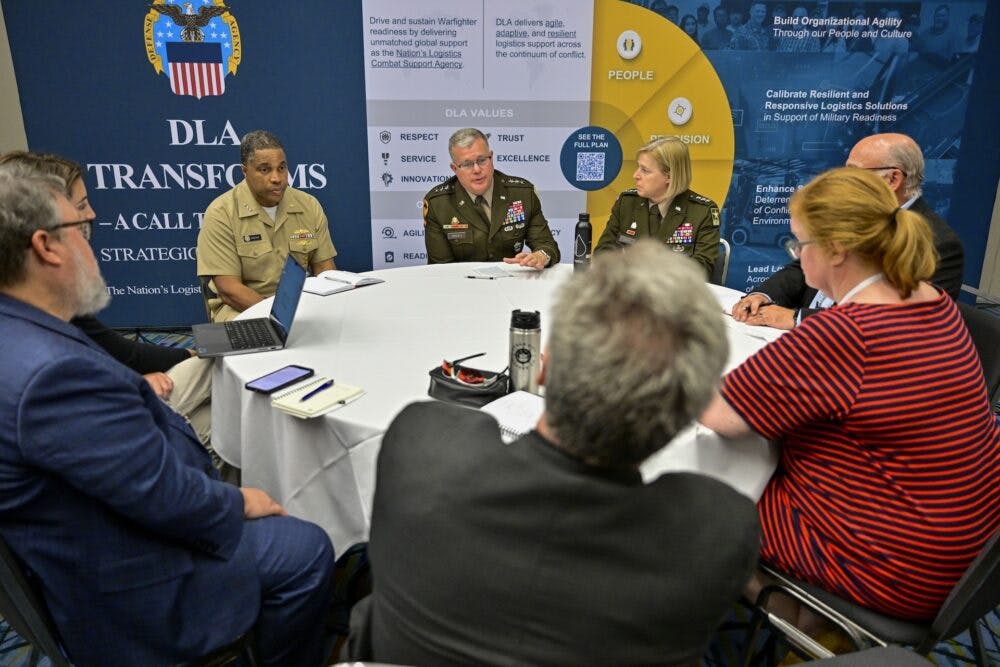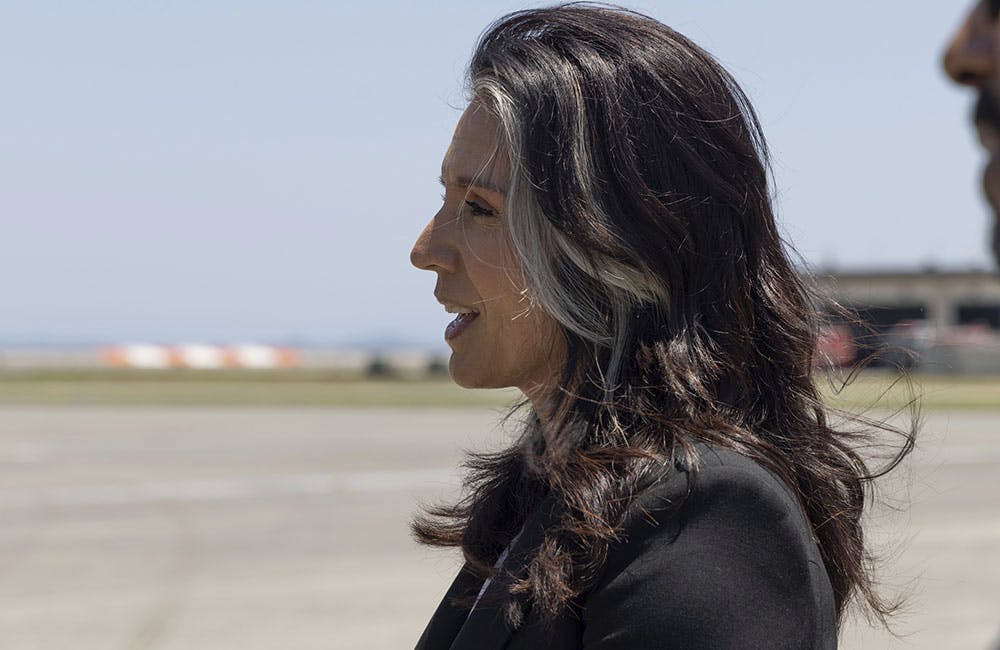How Industry Can Help SOCOM’s Tech Challenges
The command is calling on partners to help connect data, build cloud infrastructure and modernize security solutions.

U.S. Special Operations Command (SOCOM) wants industry’s help with major technical challenges around data management, cloud infrastructure and strengthened information security. This opportunity for industry partnerships, top brass said, is what ensures that the global defense force maintains its edge over adversaries.
“I really think our decisive advantage in competition is you, is industry,” U.S. Navy Rear Adm. Keith Davids, commander of Special Operations Command (SOC) South, told attendees of the Special Operations Forces Industry Conference (SOFIC) in Tampa, Florida Wednesday. “I think the innovation, the creativity, the energy that our free market system and this group of people bring — that’s where we’re going to win.”
Davids was one of five leaders of SOCOM’s Theater Special Operations Commands (TSOC) who discussed the context of each command’s missions within global theater and what they mean for the future of their technical needs.
SOC Africa, for example, is positioned in austere territory in parts of West and East Africa “surrounded by the enemy,” including the Somalia-based terrorist group Al-Shabaab, said U.S. Navy Rear Adm. Milton Sands, commander of SOC Africa, at SOFIC. “It’s where virtue is the perfect SOC operating environment. … With our partners, how do we communicate, how do we help assist partner elements forward, what technology can we give them that informs their understanding of the path, and what technology can we use to inform our own understanding of the ending?”
Other than obvious geographical challenges in connecting the joint forces with necessary data like positioning and imaging information, there are challenges inherent within adversaries that make the technological battlefield often unpredictable.
“The adversary is leveraging the state of the market to be able to bring lethal capability against us in a way that there is very low barrier [to entry],” said U.S. Navy Rear Adm. Frank Mitchell Bradley, commander of SOC Central. “How do we counter those threats that are ubiquitously available to our adversaries? How do we prepare ourselves to understand where they’re coming from? … How do you understand where the needle of lethal aid is in the haystack of illicit smuggling?”
Bradley described how taking technology and equipping the human to better understand the problem and better defend is key to SOCOM’s collaborative approach with industry partners.
“None of the technology or the technical capabilities we have are all really useful to us if they’re not used through a partnership,” he said.
But in today’s age in the ever-present information domain, handling massive amounts of valuable data is both a challenge and an opportunity. An opportunity because it can ensure understanding of threats and courses of action, such as the large-scale evacuation of Americans from Kabul, Afghanistan last year, he added. But a challenge because of the workforce.
“The reality is we don’t have the depth of personnel to troll through, but we should be doing predictive analysis, running models every day on everything from where narcos are moving during holidays,” Davids said. “There is where we need help — data structuring.”
“Help us in denying the competitive space through development of various solutions: cloud technology, AI-enabled domain-awareness platforms, [unmanned aerial systems (UAS)], counter-UAS … interoperable situational awareness tools, mission command and [command and control] C2 infrastructure. These are clearly gaps for us in the [U.S. Northern Command] space in terms of interoperability,” said Army Col. Keith Pritchard, deputy commander, of SOC North.
This is a carousel with manually rotating slides. Use Next and Previous buttons to navigate or jump to a slide with the slide dots
-

DOD Can No Longer Assume Superiority in Digital Warfare, Officials Warn
The DOD must make concerted efforts to address cyber vulnerabilities to maintain the tactical edge, military leaders said at HammerCon 2025.
4m read -

Marine Corps Operation StormBreaker Slashes Software Delivery Timelines by 17x
New program aims to deliver critical digital capabilities to warfighters at the "speed of relevance" by overhauling traditional processes.
4m read -

DHA CDAO Spearheads Master Data Catalog to Boost Transparency
Jesus Caban plans to boost DHA's data maturity through a new master data catalog, governance frameworks and inventory of tech tools.
5m read -

IRS Makes Direct File Code Public as Lawmakers Debate Program’s Fate
The agency sees the Direct File source code as beneficial to government digital services despite what happens with it in proposed budgets.
5m read -

A Look at Federal Zero Trust Transformation
Recent developments from CISA and DOD show how government is advancing zero trust quickly.
20m read -

Modernization Strategies to Enable Energy Innovation
Lawrence Berkeley National Lab and Maximus experts explore the modernization strategies driving digital transformation and operational resilience within the energy sector.
33m watch -

New Army Acquisition Plan Cites Autonomy, Predictive Analytics
Officials outline how the Army Transformation Initiative signals a broader shift toward efficiency with tech and acquisition reform.
4m read -

DOE National Labs Launch New AI Tools for Operational Efficiency
The Energy Department's National Laboratories are using AI to increase operational efficiency and drive research efforts forward.
3m read -

Software Factories Accelerate Federal Modernization Outcomes
IT leaders from Nutanix and SAIC explain how software factories streamline tech development, modernize legacy systems and accelerate adoption of emerging technologies like AI.
34m watch -

AI in Top-Secret Clouds Is a ‘Game Changer’ for IC, DNI Says
Tulsi Gabbard touts significant improvements in AI, data analysis, interoperability and operational intelligence at the AWS Summit 2025.
3m read -

AWS Summit: Forging Successful Cloud Modernization Partnerships
Industry leaders share insights on the critical role industry partnerships have in enabling government agencies to navigate procurement challenges for cloud and zero trust solutions.
24m watch Partner Content -

Human-AI Collaboration is Key to Secure Government Systems
Former CIA security chief emphasizes training and international standards for effective AI implementation.
23m watch
















